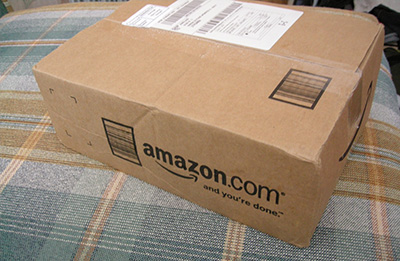Reverse logistics season is in full post-holidays bloom

While the 2017 holidays are in the rearview mirror, it does not mean that it has gotten up and gone away. How? Well, in the supply chain management world we live in, it really comes down to two simple words: reverse logistics.
To be sure, that is not a major revelation, nor is it anything new, but it requires a lot of attention, especially early on in the New Year, considering how many people need to return that drill set, fishing pole, iPad, or anything else that needed to be sent back to where it came from. Even though consumers return these things, get their store credit or credit card reimbursed, and move on, it is hardly the same thing in the high-volume, heavy money world of reverse logistics, not even close.
In case you have any doubts about that, consider that retailers’ efficiency in limiting and handling returns bought online could be as much as $32 billion in 2017, according to recent research published by industrial real estate firm CBRE. No small sum at all.
Consider this hefty data point from UPS: in late December, it called for January 3, its National Returns Day, to see 1.4 million packages returned, which is an 8% annual gain and a new record for the fifth straight year.
With this type of volume, coupled with consumers getting more and more savvy at shopping online, it stands to reason that these respective financial and package-related numbers will only continue to grow in the coming years. And with that comes constantly changing strategies, practices, and methods for both retailers, as well as their 3PL partners, to stay one step ahead, when it comes to meeting consumer customers’ needs.
Despite things needing to be changed and adjusted, when it comes to reverse logistics, there are also some tried and true things that also need to be addressed.
“With the massive amount of returns that come in this time of year, one of the biggest issues is always a bit of a lack of predictability,” explained Guy Courtin, Vice President of Retail and Fashion at Infor. “It also becomes a question of what specifically be returned or why it was returned, due to things like a supply chain issue or a package not arriving on time and its usefulness being diminished. Another issue for retailers is what to do with an item when it is returned in terms of being refurbished and put back on the store’s shelf or being sent back to a manufacturer.”
That question is not always easy to answer, but Courtin said it is imperative for retailers not to waste working capital through their returns channel, something that is not always easy to do for various reasons such as type of product or region where it was purchased, which can create returns issues for consumers.
Helping to smooth things out on the reverse logistics side for consumers and retailers are the 3PLs in the middle.
“The bigger companies like UPS and FedEx are taking on more responsibility with handling items and taking returns and assessing what to do with them,” said Courtin. “This runs in tandem with consumers getting faster and more efficient, when it comes to the returns process. With that also comes improved ways of making things on the returns side more customer-friendly and personalized, too.”
From the perspective of large retailers, Courtin pointed out that there is increasing interest from them in regards to how reverse logistics operations impact their overall inventory strategy.
This relates to reducing touches when products return, coupled with warehousing efficiency, which he said used to be a push model sending inventory out, and now it is also a pull model, which is getting retailers to process returns for inspection, refurbishing, and distribution. While this is not prominent across the board, Courtin said that more of the savvy retailers that are Infor clients are starting to think about how this plays into their overall strategy.
The impact of reverse logistics from a physical network perspective is hard to overlook as it relates to strategy.
Looking at the current environment, as it relates to e-commerce and the role of 3PL operators, CBRE Global Head of Industrial & Logistics Research David Egan said that 3PLs represent a “sensible solution” for many shippers, because they have a clear understanding of what they are doing and are able to back it up with high service levels and experience, too.
That thesis was further supported by CBRE in its aforementioned research, which noted that the solution to the reverse logistics problem is improved and expanded supply chain networks that create tremendous real estate opportunities as users add additional warehouses and distribution centers to support the reverse flow of inventory.
Reverse logistics are more than just simply a consumer returning an item and everyone moving on. There is a lot more to it, and it requires operational expertise, planning and a keen attention to detail to name a few. At the same time, while things have come a long way on the reverse logistics front, there is also more ground to cover to make it a more fluid process in the coming years.

Article Topics
Blogs News & Resources
Latest in Materials Handling
Registration open for Pack Expo International 2024 Walmart chooses Swisslog AS/RS and software for third milk processing facility NetLogistik partners with Vuzix subsidiary Moviynt to offer mobility solutions for warehouses Materials Handling Robotics: The new world of heterogeneous robotic integration BSLBATT is looking for new distributors and resellers worldwide Lucas Watson appointed CSO for Körber’s Parcel Logistics business in North America Hyster recognizes Dealers of Distinction for 2023 More Materials HandlingAbout the Author
Subscribe to Materials Handling Magazine

Find out what the world's most innovative companies are doing to improve productivity in their plants and distribution centers.
Start your FREE subscription today.
April 2024 Modern Materials Handling

Latest Resources










